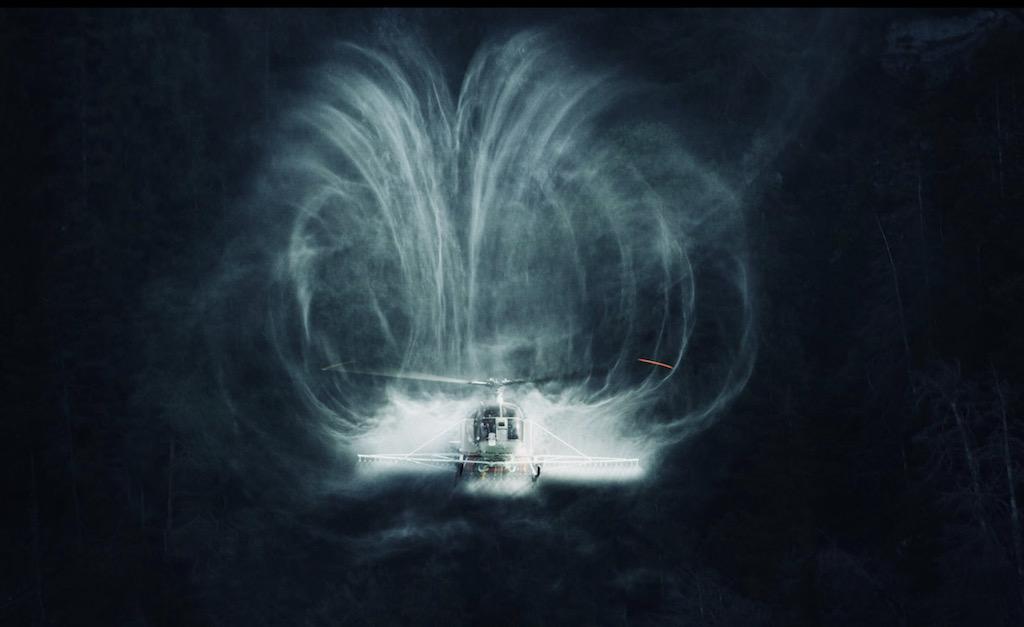
This is third of a three-part article series. The first part discusses trim strings and the second focuses on descent rates.
A helicopter is susceptible to Vertical Ring State (VRS) when the airspeed range occurs from any direction. For helicopters in the low disk loading category, the airspeed range of susceptibility to VRS is 0-10 kts. For medium disk loaded helicopters, the range is between 0-20 kts. For high disk loaded helicopters, the range expands from 0-30 kts.
Remaining out of the VRS envelope depends on a pilot’s accurate assessment of the wind direction. There are many reasons why this isn’t as simple as it sounds. This author has cited in previous articles the potentially misleading indications from a wind sock, especially when the wind sock is located where a prevailing wind can cause recirculation zones and shed vortices. Both of these phenomena can cause the wind sock to deflect in a different direction from the prevailing wind flow. Landing approaches in the vicinity of obstacles (buildings, trees, mountain ridges, etc) can expose a helicopter to a micro-climate of vastly changing winds in a short distance.
Is there a sensor that can provide immediate information to a pilot regarding the airflow condition over the nose of the helicopter in a tailwind? This is yet another reason in which the trim string appears to be invaluable.
Vuichard illustrates three ways to enter the VRS envelope. One method is by reducing airspeed at a constant rate of descent, similar to a landing approach. A normal powered descend with a high rate of descent and low indicated airspeed is one of the classic situations leading to VRS.
Another entry begins from above, by increasing the rate of descent into the envelope. This can occur when a helicopter can’t maintain a hover out of ground effect (HOGE) due to lack of power, or during wildfire suppression efforts when firefighting helicopters are forced to dip their bambi buckets within the tight confines of steep gorges and nearby electrical power cables that are suspended across the canyon.
A third method occurs during a decrease in the rate of descent from a very low power approach or a low-speed autorotation. The final phase of an autorotative landing to power recovery is a classic scenario in which a helicopter is especially close to the VRS envelope. VRS also is a big risk during a downwind approach or downwind quickstop, and a flare in combination with height loss.
After watching this video, the warnings in the Robinson flight manual make much more sense. Rather than merely memorizing the limitation, this video helps a pilot understand how to apply this limitation to real world flying. It is now abundantly clear why it is important to keep descent rate less than 300 fpm when slower than 30 kts.
Next Steps
Many of helicopter aviation’s elite have fallen victim to VRS, the invisible phenomenon. Clearly much more needs to be understood about the human factors involved with it. The prevention and recovery from VRS depends heavily on our sensory, perceptual, memory and motor systems. Unfortunately the role of these human systems haven’t been addressed in any meaningful way in the training literature on VRS. Even though Vuichard’s recovery demonstrations look simple and elegant, there is plenty of potential for negative habit transfer by unqualified instructors or poor instructional methods, such as what I experienced in the R22.
Simply tossing a student into the seat and saying, “Just apply more collective, apply right cycle (for a helicopter with a counter-rotating main rotor) and left pedal” is a woefully inadequate and uninformed teaching approach. The instruction for upset recovery requires a carefully designed step-by-step approach. This will be especially challenging for those of us “old dogs” who were taught the conventional recovery technique long ago. There is insufficient science-based data to reveal how much practice is necessary to un-do habit patterns learned long ago.
In the interim, EASA is contracting with France’s Office National d'Etudes et de Recherches Aérospatiales (ONERA) to conduct an in-depth study to determine the flight conditions at which the VRS starts to develop, as well as to evaluate the effectiveness of the Vuichard recovery technique for at least two different types of helicopters. In addition, the FAA’s Flight Test Center is conducting a study on the efficiency of the different vortex recovery methods.
Vuichard emphasizes that “At the end of these studies, the industry must be advised to instruct only one method that really works under all operating conditions. It is absolutely impossible for a human to reflexively apply more than one procedure when feeling a low g at low speed mostly in a critical flight phase.”





